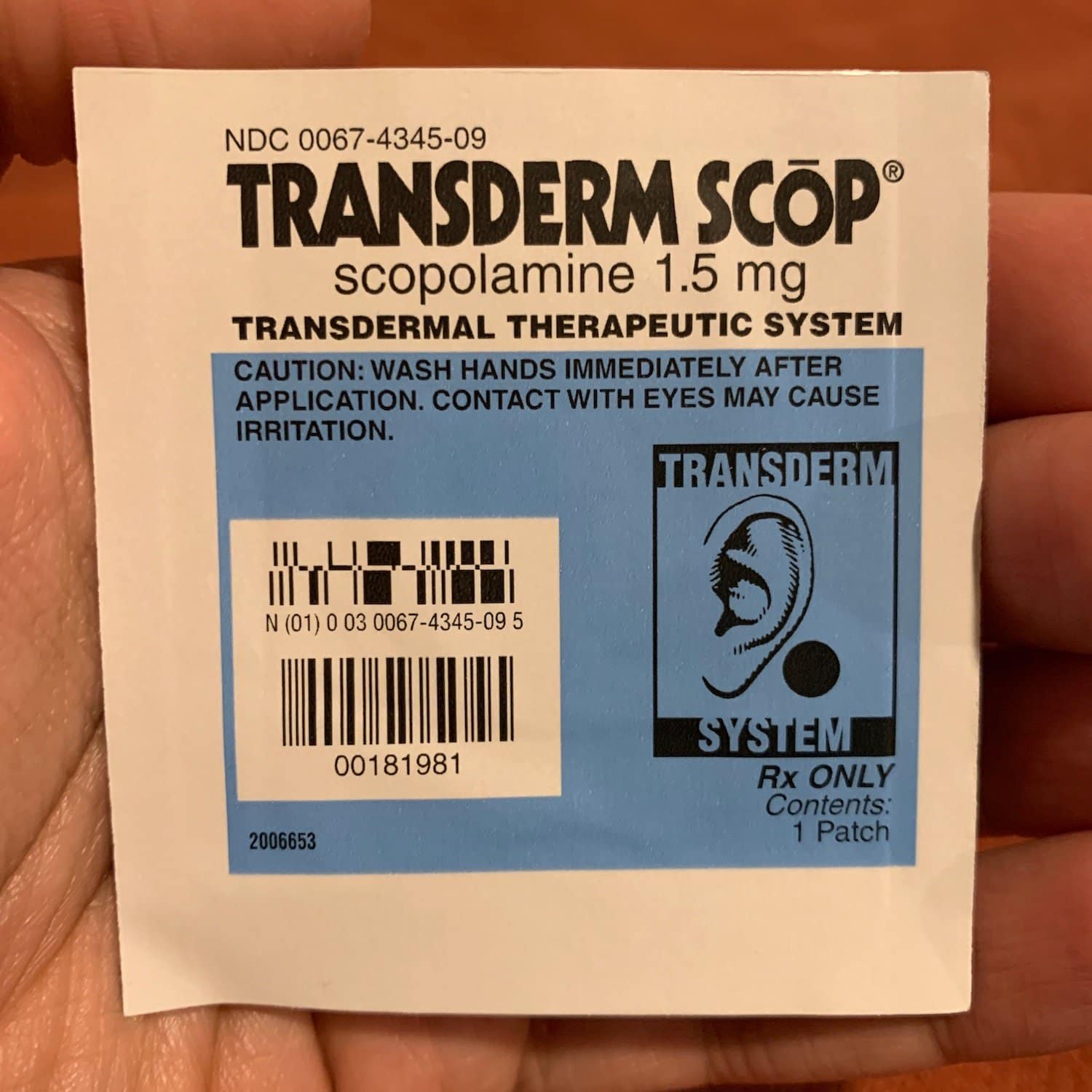Scopolamine is a tertiary amine that crosses the blood-brain barrier to exert its anticholinergic effects in the central nervous system (antiemetic, sedative, amnestic) and the periphery. It is available PO, subcutaneously, intravenously, and transdermally – classically a “patch” used for motion sickness and nausea effectively for up to three days. Compared to the two other anticholinergics I routinely use – atropine and glycopyrrolate – scopolamine is a more potent sedative, antisialagogue, antiemetic, and mydriatic (an agent which induces pupillary dilation – be careful in patients with histories of angle-closure glaucoma!)
As an intensivist, I MUST be wary about the central anticholinergic effects that this medication can confer, leading to confusion, delirium, and other cognitive changes in critically ill patients (especially the elderly with preexisting cognitive impairment). Furthermore, both scopolamine withdrawal and toxicity can present with mental status changes. Withdrawal symptoms (not enough acetylcholine) more classically include GI cramping, bradycardia, and diaphoresis, whereas toxicity (too much acetylcholine) may present with dryness and tachycardia.
Oh yeah, because of the patch’s metallic backing, remember to remove it before an MRI! 😉
Drop me a comment with questions below! 🙂







Hello! Nice to meet you I’m an anesthesiologist in Brazil; in here we don’t have transdermal scopolamine and that’s why I am asking this: do you think that subcutaneous scopolamine would prevent post operative nausea and vomiting just as well as transdermal patch? Thanks!
Hey Bernardo! I’m honestly not sure how the release of scopolamine from a patch compares to the release from a fat depot (subcutaneous).
Thanks for your time